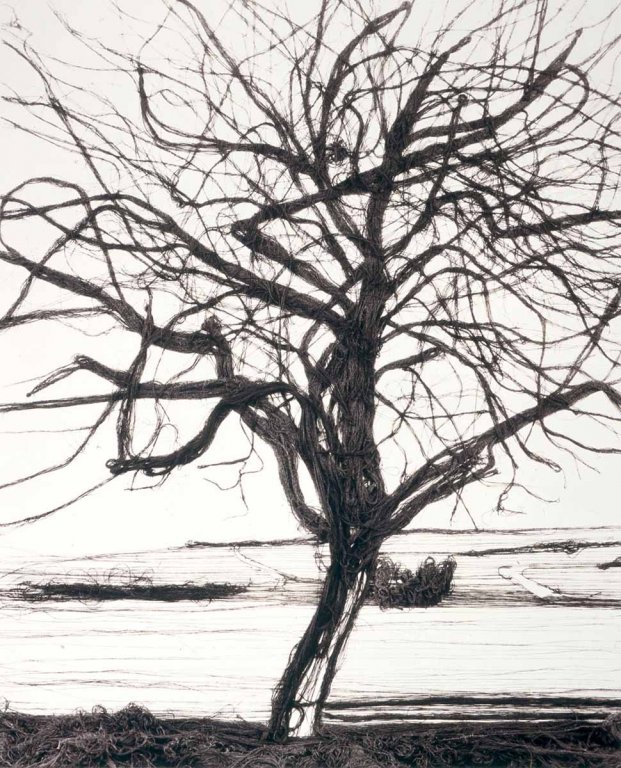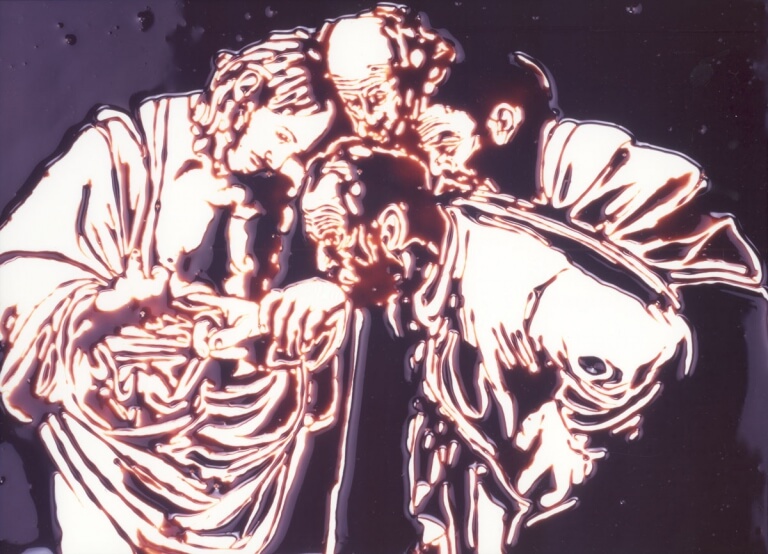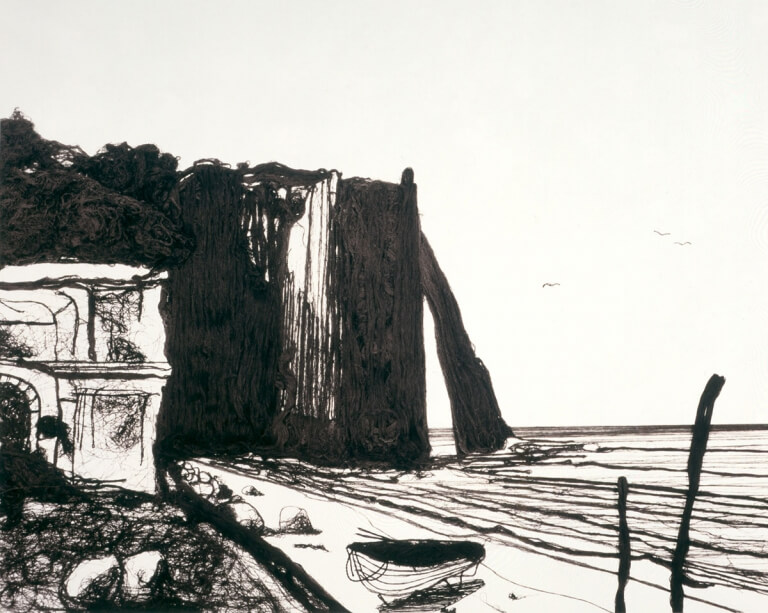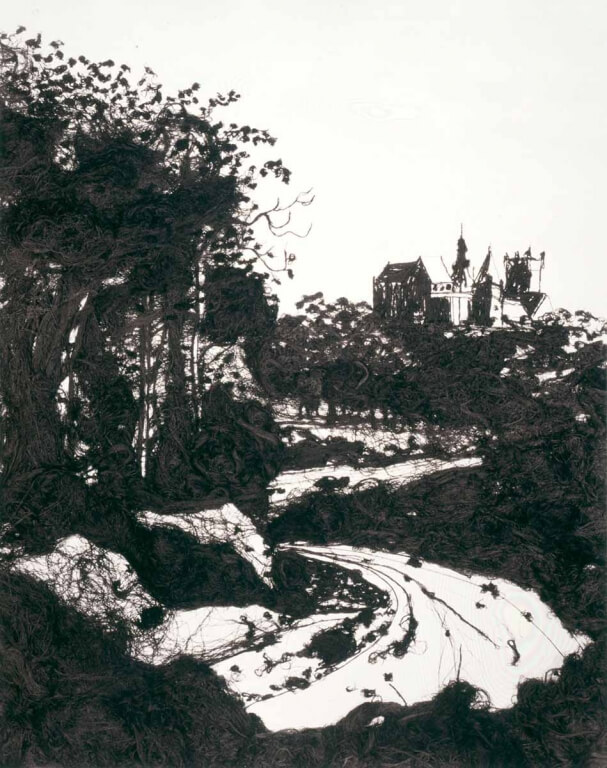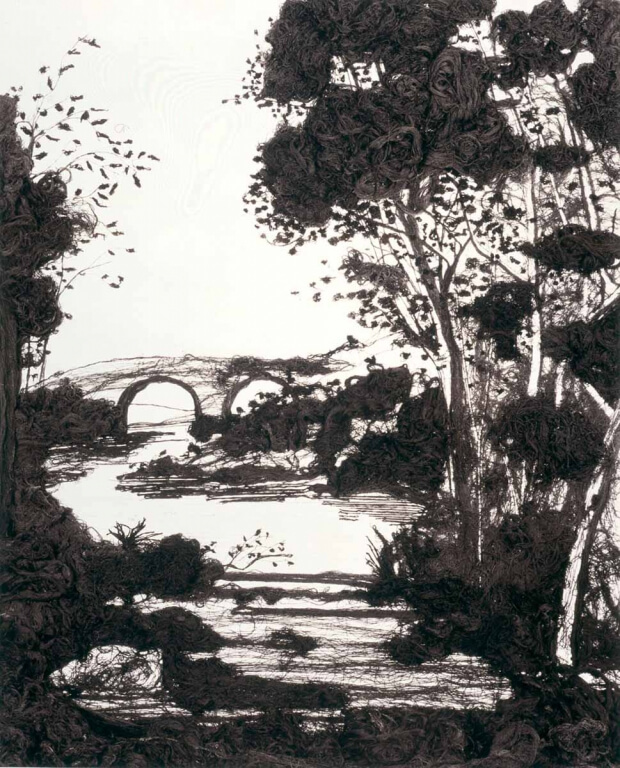The work of Brazilian photographer Vik Muniz (1961) seems initially to have little to do with traditional photography. However, he still calls himself a photographer for the simple reason that the final product is a photograph. Muniz made a name for himself in the early 1980’s in New York as a sculptor. He soon shifted the emphasis of his activities to photography. When he realised that, in documenting his work, he was actually trying to photograph the sculpture exactly as he had envisioned it, it was settled. His photographs have been exhibited extensively in past years in America and Europe, but only rarely have they been seen in the Netherlands. In addition to his work as a photographer and artist, Muniz is also an essayist, teacher and curator of exhibitions.
One of the most important phenomena Vik Muniz wants to analyse in his photographs is the question of whether the viewer believes what he sees. He balances on the knife’s edge between representation and reality, between fact and fiction. In his photos, Muniz experiments with the knowledge that anything recorded on film must have actually existed. Ingeniously and playfully, he copies visual icons of history and art using the most improbable materials, such as chocolate syrup, wool and barbed wire. Muniz does not intend to deceive the viewer with these copies. Rather, he wants his public to consider how reliable the image is. Through his photos, he invites his audience to go through the process of seeing, perceiving and recognising. In the words of Muniz himself: “I want to make the worst possible illusion that will still fool the eyes of the average person. Something so rudimentary and simple that the viewer will think, ‘I don’t believe what I’m seeing, I can’t be seeing this, my mind is too sophisticated to fall for something as silly as this’. Illusions as bad as mine make people aware of the fallacies of visual information and the pleasure to be derived from such fallacies. These illusions are made to reveal the architecture of our concept of truth. They are meta-illusions”
Muniz has played on this theme in a number of series, each featuring a different choice of medium. The Pictures of Chocolate series (1997-1999), for example, shows copies of famous and less famous paintings by Géricault and Caravaggio in chocolate syrup, as well as a copy of the photo Harry Shunk made of the world-famous jump made by Yves Klein. His choice of chocolate syrup was determined by the associations chocolate has with desire and romance, a simple variation on calme, luxe et volupté. However, the material is accompanied by technical complications: the chocolate dries within an hour, which means that Muniz must work at lightning speed. The photo he makes of the result therefore is more than a record of an object; it also registers an event, a performance, a creative act. For his Pictures of Thread series (1995-1999), Muniz used thread to reproduce etchings, drawings and photographs by John Constable, Jacob van Ruysdael and Eugène Atget. The graphic nature of the original images is given additional emphasis by the prickly, fuzzy material. In his series The Sugar Children (1996), Muniz links image and material. On the Caribbean island of St. Kitts, he literally portrayed the children of the local sugarcane cutters in sugar.
The exhibition was organised by the Centre national de la photographie in collaboration with the Galerie Xippas in Paris.
Own collection
Huis Marseille regularly exhibits photographs from its own collection. This small collection, which mainly contains work by contemporary photographers, is gradually being expanded. During Vik Muniz’s exhibition, work by photographers with a very distinct graphic quality, including Tracey Moffatt, Matt Collishaw, Herlinde Koelbl, Gerhard Richter, and Roni Horn, will be on display in the basement.
Featuring work from our collection by
Vik Muniz, Tracey Moffatt, Herlinde Koelbl, Gerhard Richter, Roni Horn
